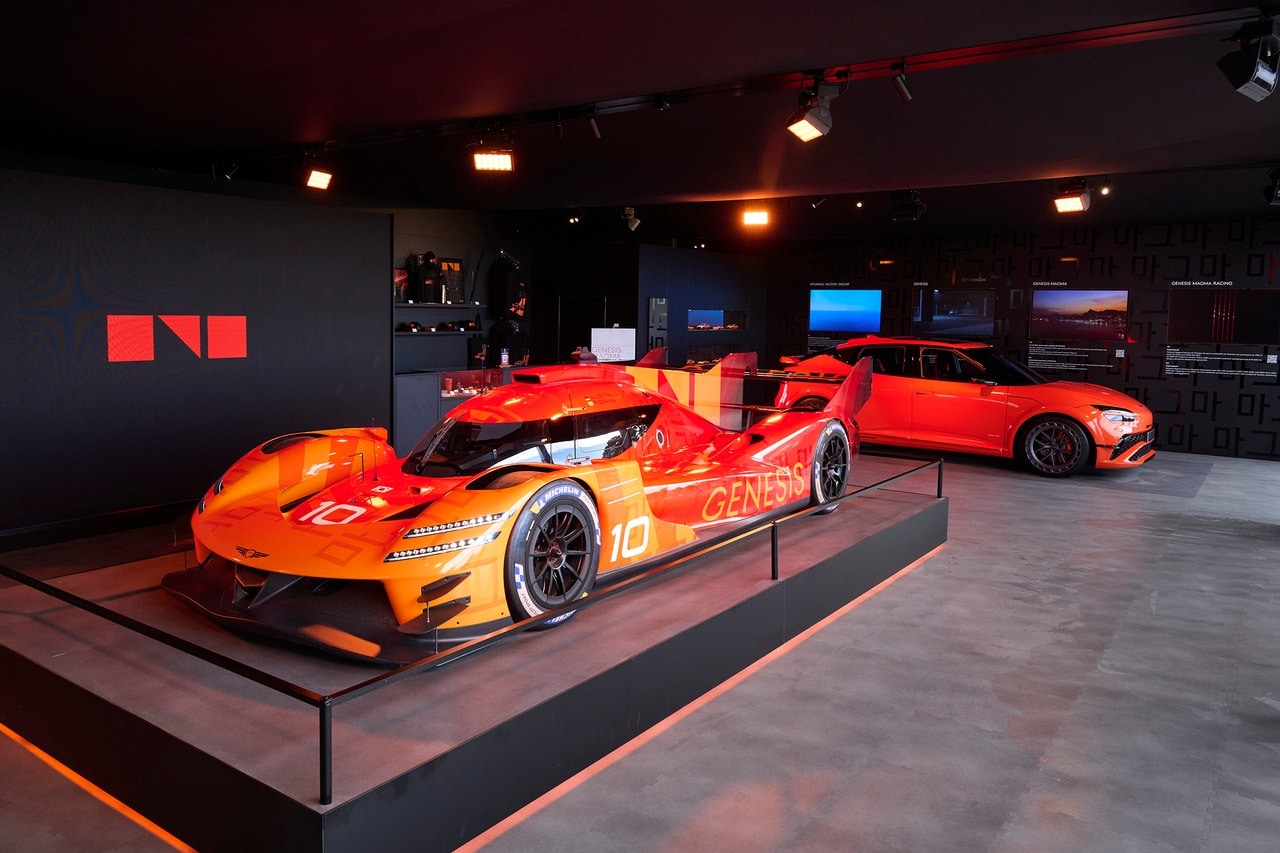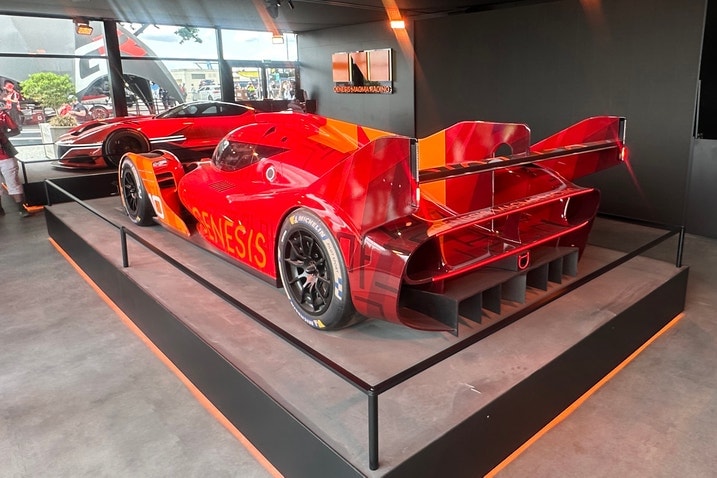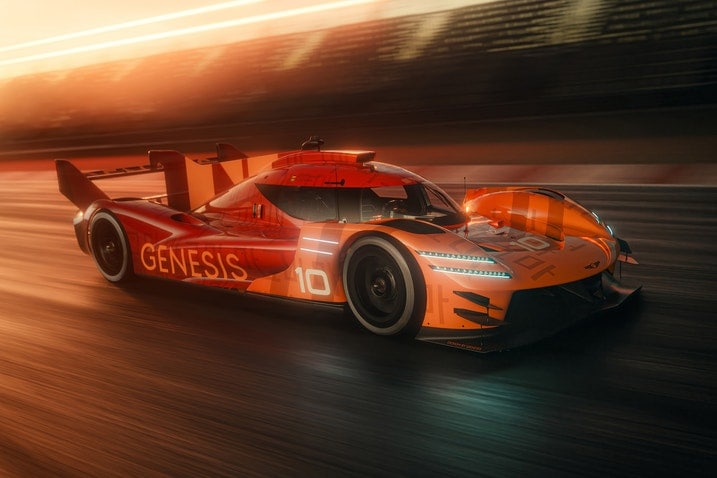- The GMR-001 is a new racing hypercar from Genesis.
- It'll compete in the World Endurance Championship series in 2026.
- The design takes inspiration from the company's current road cars.
Genesis Will Go Racing Next Year With the GMR-001 Hypercar
We get an up-close look at the car that'll compete in next year's World Endurance Championship series
Genesis' new Magma performance arm is coming soon; the GV60 Magma will likely be the first model to reach our shores. In order to truly capture the knowledge needed to compete with the BMW Ms and Mercedes-AMGs of the world, Genesis has decided to break into motorsports with the GMR-001 Hypercar, which will make its on-track debut in the World Endurance Championship series in 2026, including the infamous 24 Hours of Le Mans.
The GMR-001 will join BMW, Cadillac, Porsche and Toyota in the LMDh category of hypercars. Among other limitations, these cars can only use a chassis built by one of four suppliers and are restricted in terms of overall aerodynamics. To the untrained eye, these racers can look very similar.
But that isn't true of the Genesis Magma Racing car. The model shown at this year's 24 Hours of Le Mans looks like a flaming orange ball of fire. The most subtle detail is what Genesis calls the "anti-wedge" — think of it as a parabolic line that runs along the side of the car, giving it a fluid, curvy appearance. You can see this design detail across Genesis' road-going vehicle lineup and it's a key component to the brand's sophisticated design language. Incorporating the anti-wedge element into the hypercar is a bold move, as other manufacturers' cars are riddled with flat panels and straight lines. If BMW's Le Mans car is Kate Moss, the Genesis skews more toward Marilyn Monroe.
But don't think that the anti-wedge is just there for looks. The curvy body design also helps the car achieve the maximum 4:1 downforce-to-drag ratio as specified for LMDh cars. Genesis' lead designer, Luc Donckerwolke, said that his aim was to keep the design functional.
"There is no styling that will not generate performance," Donckerwolke said. "There are no elements that are there just to make it look cool. It's all about aerodynamic performance."
The car should stand out even at night thanks to the traditional two-bar Genesis light signature. Featured in both the front and rear of the GMR-001 car, the lights on this car are pure Genesis goodness. The car also has a stunning orange paint job that darkens to red toward the rear of the car. This hue shift is intentional — it represents a temperature change as your eyes move closer to the car's engine and exhaust.
The lessons Genesis learns on the track will hopefully trickle down to its road-going production cars.
"Looking further ahead, maximizing synergies between mass production and motorsports is definitely something that we like to do," said team principal Cyril Abiteboul. "We are inspired by what Porsche has done, but that is something that takes time."
Donckerwolke went a step further, saying that he'd love to see a street-legal version of the GMR-001, much like Aston Martin's Valkyrie.
"I dream of bringing a Genesis hypercar to the street," Donckerwolke said. "We will see how that could go, but at the moment we first have to be competitive. Other manufacturers are doing it, but there are big hurdles in doing it in terms of homologation."
In other words, Genesis wants to win some races before it starts worrying about how to make the GMR-001 road-legal. In the meantime, you'll be able to see the car next year in the World Endurance Championship with races in France, Italy, Belgium, Japan, Brazil, Qatar, Bahrain and the United States.





.jpg) by
by  edited by
edited by